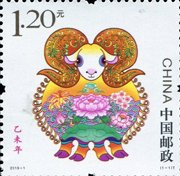MATHINFINITY

SYMMETRY
Symmetry is a feature of geometric figures. The left and right sides of an object are symmetrical if we were to observe mirror images of each of them. A plane figure has reflectional symmetry if both the left and right sides of its central line (axis) can coincide with each other after folding. There can be one or more axes. A figure has rotational symmetry if it appears unchanged after rotating 180° at its central point.


Symmetry in Nature
Symmetry often appears in nature. It is like the proportion, balance and coordination among the different parts of a system. Examples include tigers, jelly-fish, bees, butterflies, etc. Symmetry facilitates their body balance and coordination under the command of their central nervous systems. However, echinoderm such as starfish has rotational symmetry. In the botanical world, rotational symmetry often appears in leaves, stems, and flower petals, such as succulent plants, roses, etc. A typical example of symmetry with multiple axes found in nature is the hexagonal snowflake.




Asymmetry in Symmetry
The body and appearance of animals, including human beings, are symmetrical, though their internal organs remain asymmetric. In general, in a human body, the heart is found to the left side, liver to the right and stomach also to the left. Biologists discover that the embryo grows symmetrically at the beginning. Until around 6 weeks, when left-right asymmetry starts to appear since the fluid flow driven by the numerous rotating cilia in the node determines the normal development of the left-right axis.
Man-made Symmetry
Symmetry is a concept formed during the process of observing and understanding nature by human beings, and gradually establishing our general aesthetic principles. In real life, in external appearance, the more symmetry, usually the more appealing it's deemed. Famous Chinese and foreign architecture, for instance Taj Mahal, Arc de Triomphe, Temple of Heaven, etc., have made use of symmetric axes in their architectural design so that they look more elegant and magnificent. Different kinds of traditional utensils, artifacts and even decorative objects in modern homes have largely used symmetry to express their aesthetic concepts.




Interactive Game
Come and find the other half of yourself! Sit properly and adjust your seat. Look at the camera on the top of the mirror, and see if the left and right sides of your face are symmetrical.
Did you know?
In his supplement to Standard Model in 1996, Japanese particle physicist, Hitoshi Murayama, proposed supersymmetry for the first time. It is a kind of symmetry between fermions and bosons. However, it is still not yet found or observed in nature.
About CMM
Contact US
Others
Other Websites
Number of Visitors:
Last Modified Date: 10/03/2025